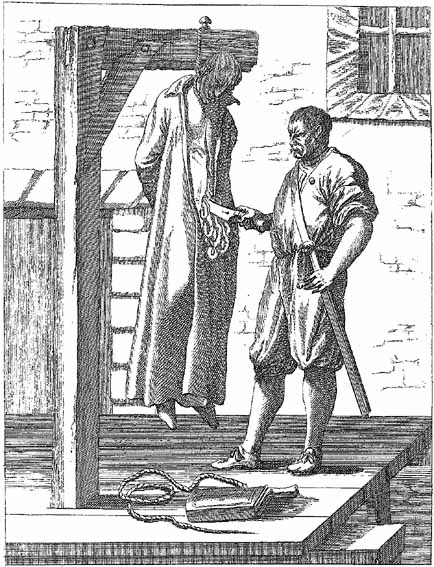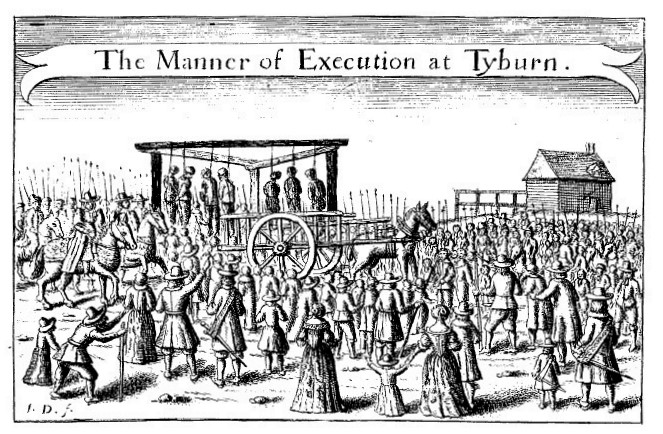Ven. William Hartley
Martyr; b. at Wyn, in Derbyshire, England, of a yeoman family about 1557; d. 5 October, 1588. At eighteen he matriculated at St. John’s, Oxford, where he became a chaplain. Being ejected by the vice-chancellor, Tobie Mathew, in 1579, he went to Reims in August, was ordained at Châlons, and returned to England in June, 1580. He was of great service to Fathers Persons and Campion in printing and distributing their books, but was eventually arrested, 13 August, 1581, and sent to Marshalsea Prison, London. Here he was detected saying Mass in a cell before Lord Vaux, and for this he was laid in irons (5 December, 1583). He was indicted for high treason, 7 February, 1584, but for some unknown reason, not tried. In January, 1585, he was sent into exile. He then spent some little time at Reims, recovering his health, and made a pilgrimage to Rome (15 April, 1586), before returning to his perilous mission. In September, 1588, he was arrested in Holborn, London, and, as his friend father Warford said, “being beset by the deceits of the heretics, incurred the suspicion of having apostatized. But the event showed how unjust the suspicion was; when he suffered at Tyburn he won the greatest credit for constancy. He was a man of the meekest disposition and naturally virtuous, modest, and grave, with a sober and peaceful look. His beard was blackish and his height moderate” (“Acts of English Martyrs”, cited below, 272).

Hung, Drawn and Quartered. This barbaric form of execution, popular during the reign of Elizabeth I, where they are hanged till they are almost dead, cut down, and quartered alive; after that, their members and bowels are cut from their bodies, and thrown into a fire.
The Armada year was for Catholics both the time of worst bloodshed and of the greatest dearth of news, and this explains why we know but little of Hartley’s companions. The first was a priest, the Venerable John Hewitt, son of a draper at York and a student at Caius College, Cambridge. He had once been in York prison, but was arrested in Grey’s Inn Lane, London, 10 March, 1857, going under the name of Weldon, and died under that name; this had led several early martyrologists into the curious mistake of making him into two martyrs, Hewett dying at York, and Weldon at London. Hartley’s second companion was the Venerable Robert Sutton, a tutor or schoolmaster, born at Kegworth in Leichestershire, who had practiced his profession in Paternoster Row, London. The fourth [sic] was John Harrison, alias Symons, who had carried letters from one priest to another. As he had before “been slandered to be a spy” we can guess why his fame suffered some obscurity. It is also hardly doubtful that his name, Harrison, was confounded with that of either Matthias or James Harrison, priests, who suffered martyrdom in 1599 or 1602 respectively. This perhaps explains why his name has fallen out of the process of the English martyrs, and in its place we find inserted that of Venerable Richard Williams, a “Queen Mary priest” who really suffered four years later.
The Month, January, 1879, 71-85; January, 1905, 19; Pollen, Acts of English Martyrs (London, 1891); Catholic Records Society (London, 1906, 1908), II, V; Jaeffreson, Middlesex County Records (London, 1886), II, 171, 180; Boase, Oxford registers, (Oxford, 1885-89), II, ii, 68; Challoner, Memoirs, I; Gillow, Bibl. Dict. Eng. Cath., s. v.
J.H. POLLEN (Catholic Encyclopedia)










